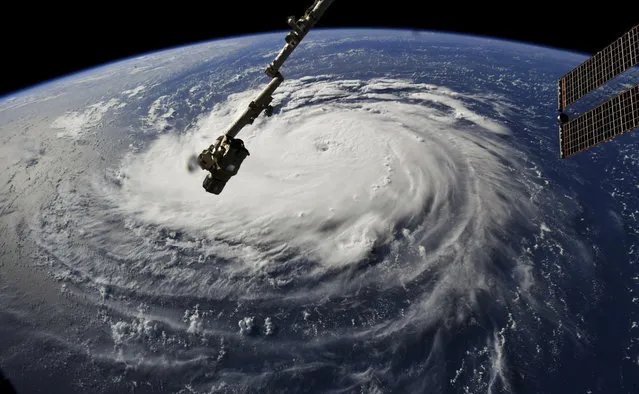
This photo provided by NASA shows Hurricane Florence from the International Space Station on Monday, September 10, 2018, as it threatens the U.S. East Coast. Forecasters said Florence could become an extremely dangerous major hurricane sometime Monday and remain that way for days. (Photo by NASA via AP Photo)
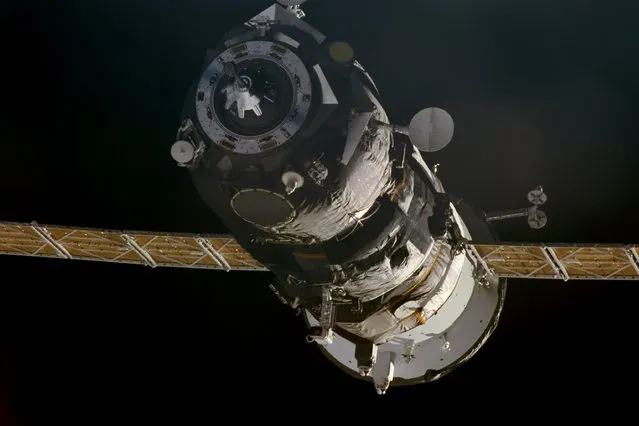
This photo provided by NASA shows a Progress supply ship that arrived on November 18, 2000 to link up to the International Space Station, bringing Expedition 1 commander Bill Shepherd, pilot Yuri P. Gidzenko and flight engineer Sergei K. Krikalev two tons of food, clothing, hardware and holiday gifts from their families. (Photo by NASA via AP Photo)
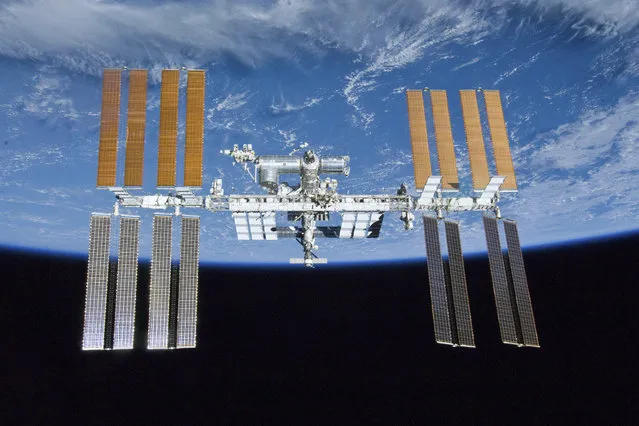
This photo provided by NASA shows the International Space Station as seen from the Space Shuttle Atlantis after the station and shuttle began their post-undocking relative separation on May 23, 2010. Twenty years after the first crew arrived, the space station has hosted 241 residents and grown from three cramped and humid rooms to a complex almost as long as a football field, with six sleeping compartments, three toilets, a domed lookout and three high-tech labs. (Photo by NASA via AP Photo)
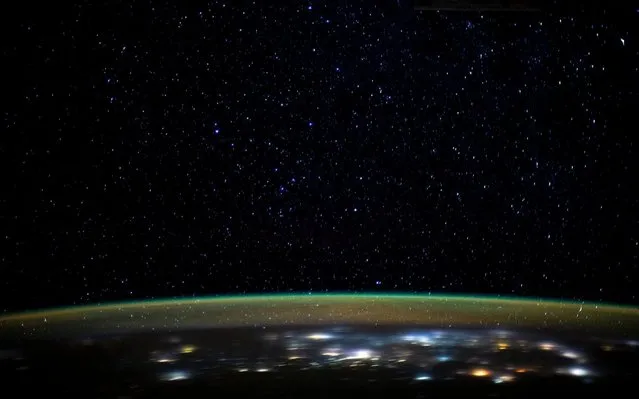
This NASA image obtained on January 5, 2020 shows stars as they glitter in the night sky above the Earth's atmospheric glow, as the International Space Station orbited 260 miles above the Earth as it was about to cross over the Caspian Sea on January 2, 2020. (Photo by Handout/NASA/AFP Photo)
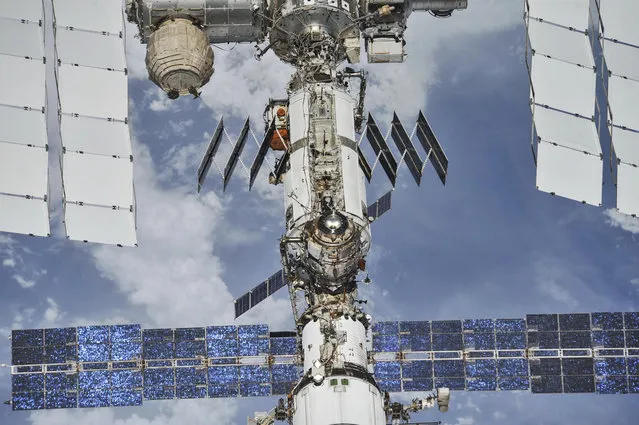
In this photo provided by NASA/Roscosmos, the International Space Station floats above the Earth as seen from a Soyuz spacecraft after undocking on October 4, 2018. NASA astronauts Andrew Feustel and Ricky Arnold and Roscosmos cosmonaut Oleg Artemyev executed a fly around of the orbiting laboratory to take pictures of the station before returning home after spending 197 days in space. Twenty years after the first crew arrived, the space station has hosted 241 residents. (Photo by NASA/Roscosmos via AP Photo)
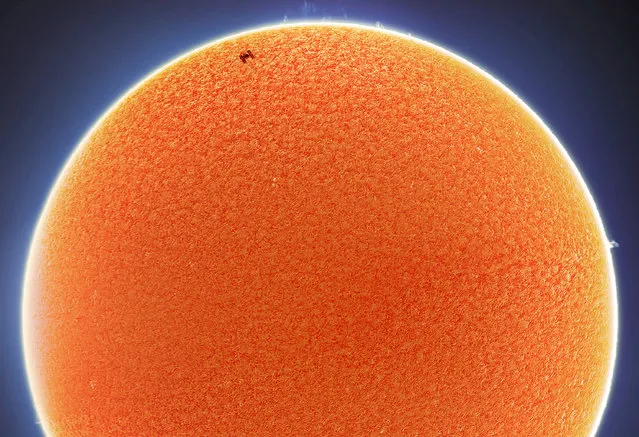
The International Space Station (ISS) moving in front of the sun in November 2020 by astrophotographer Andrew McCarthy. These incredible photos capture the clearest images ever taken of the International Space Station (ISS) moving in front of both the moon and the sun. The photos, taken within days of one another, were captured in the space of less than a second, as the space station could be clearly seen zooming across against the bright backdrops of both moon and sun. Photographer Andrew McCarthy, from California, USA, said the photo of the ISS in front of the sun, in broad daylight, was “one of my trickiest shots ever”. (Photo by Andrew McCarthy/South West News Service)
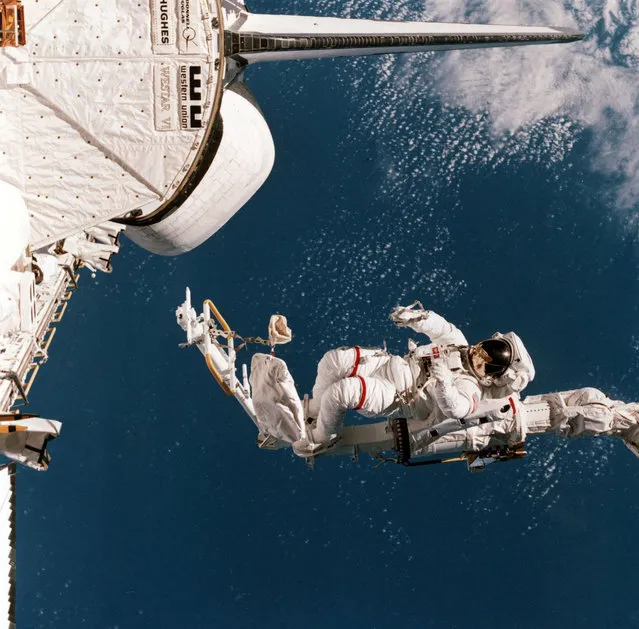
In this image provided by NASA, mission specialist Bruce McCandless is shown outside of the Space Shuttle Challenger, February 7, 1984, using a remote manipulator system (RMS) arm and mobile foot restraint (MFR) to experiment with a “cherry picker” concept. (Photo by AP Photo/NASA)
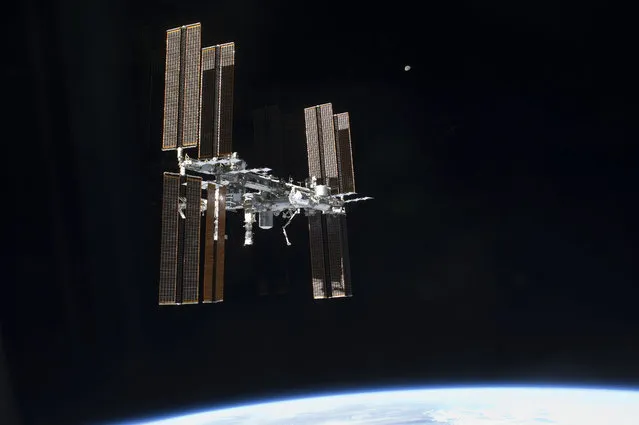
In this photo provided by NASA, the International Space Station is seen from the Space Shuttle Atlantis as the two spacecraft perform their relative separation on July 19, 2011. Above and to the right of the space station is the moon far in the distance. (Photo by NASA via AP Photo)
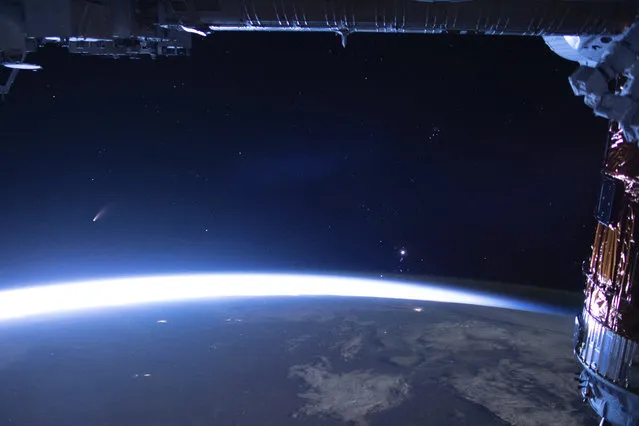
Comet Neowise appears in the eastern horizon above Earth in an image taken from the ISS on July 5. 2020. (Photo by AP Photo)
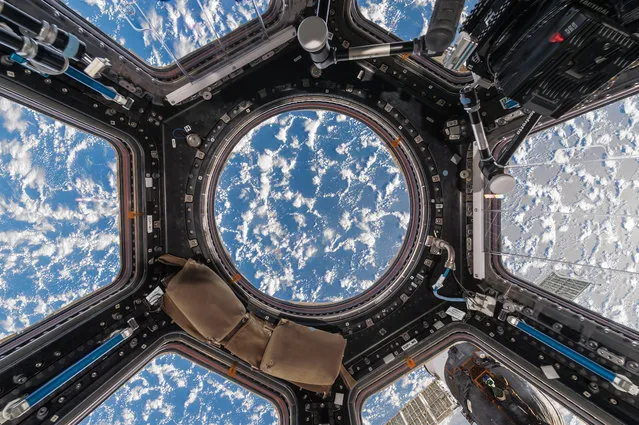
Cupola module, International Space Station, 2017. A stunning pattern of clouds and light over the ocean. The organic shapes of the clouds contrast with the geometric lines and shapes of the Cupola’s interior. (Photo by Paolo Nespoli and Roland Miller/The Guardian)
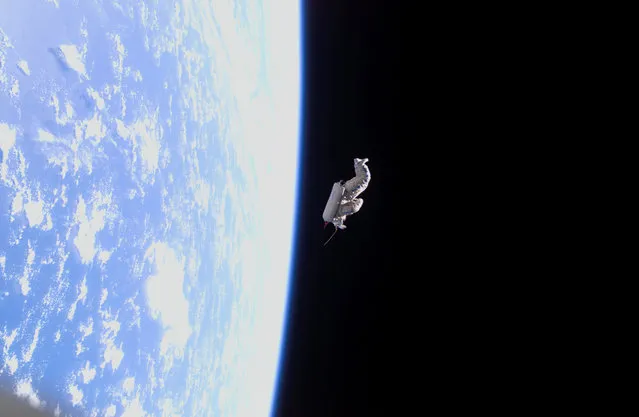
Backdropped by the blackness of space and Earth’s horizon, a spacesuit-turned-satellite called SuitSat began its orbit around the Earth after it was released by the Expedition 12 crewmembers during a session of extravehicular activity (EVA) on February 3, 2006. SuitSat, an unneeded Russian Orlan spacesuit, was outfitted by the crew with three batteries, internal sensors and a radio transmitter, which faintly transmitted recorded voices of school children to amateur radio operators worldwide. The suit will enter the atmosphere and burn up in a few weeks. (Photo by NASA)
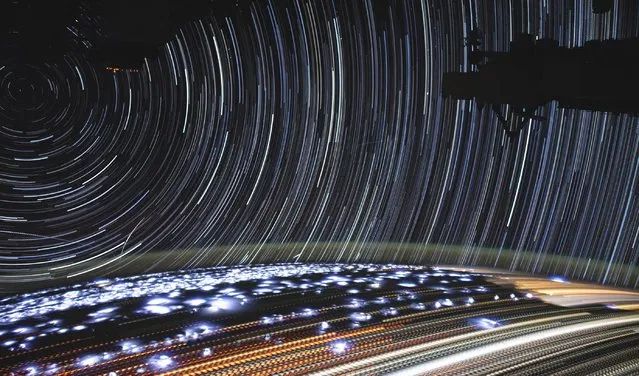
This image of star trails was compiled from time-lapse photography taken by NASA astronaut Christina Koch from aboard the International Space Station, taken in July 2019. On the ground, stationary features like cities appear as pale yellow-white dotted streaks with each dot marking another frame captured. Many of the thinner dotted lines with darker orange hues are fires burning across Angola and the Democratic Republic of the Congo. (Photo by NASA)
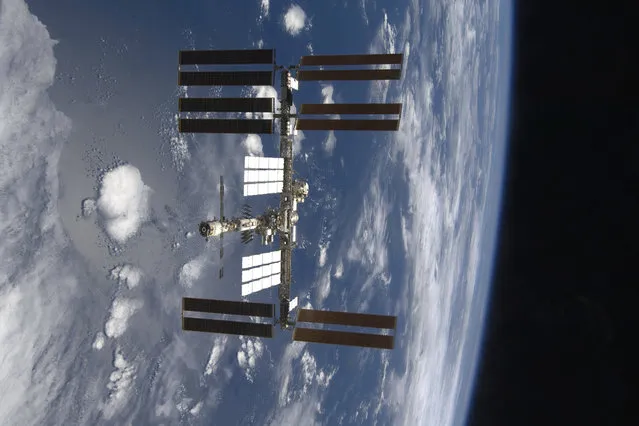
This photo provided by NASA shows the International Space Station as seen from Space Shuttle Endeavour as the two spacecraft begin their relative separation on November 28, 2008. Twenty years after the first crew arrived at the space station, the spacecraft has hosted 241 residents and grown from three cramped and humid rooms to a complex almost as long as a football field, with six sleeping compartments, three toilets, a domed lookout and three high-tech labs. (Photo by NASA via AP Photo)
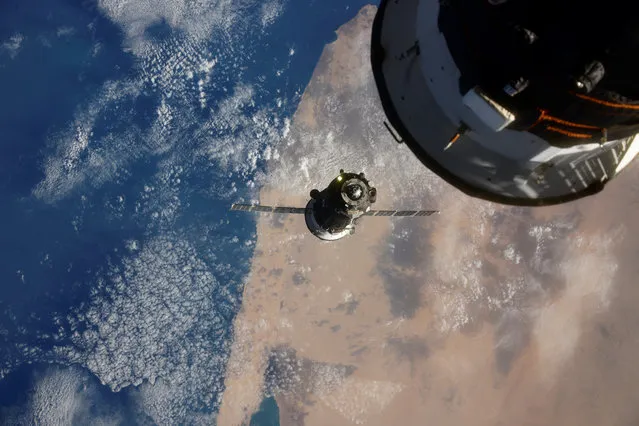
The Soyuz MS-17 spacecraft carrying the crew formed of Kathleen Rubins of NASA, Sergey Ryzhikov and Sergey Kud-Sverchkov of the Russian space agency Roscosmos is seen before docking to Rassvet module of the International Space Station (ISS), October 14, 2020, in this picture taken by Russian cosmonaut Ivan Vagner from the International Space Station (ISS). (Photo by Ivan Vagner/Russian space agency Roscosmos/Handout via Reuters)
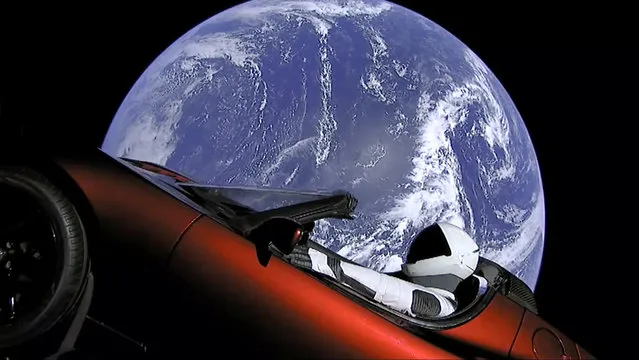
This image from video provided by SpaceX shows the company's spacesuit in Elon Musk's red Tesla sports car which was launched into space during the first test flight of the Falcon Heavy rocket on Tuesday, February 6, 2018. (Photo by SpaceX via AP Photo)
28 Nov 2020 00:05:00,
post received
0 comments
